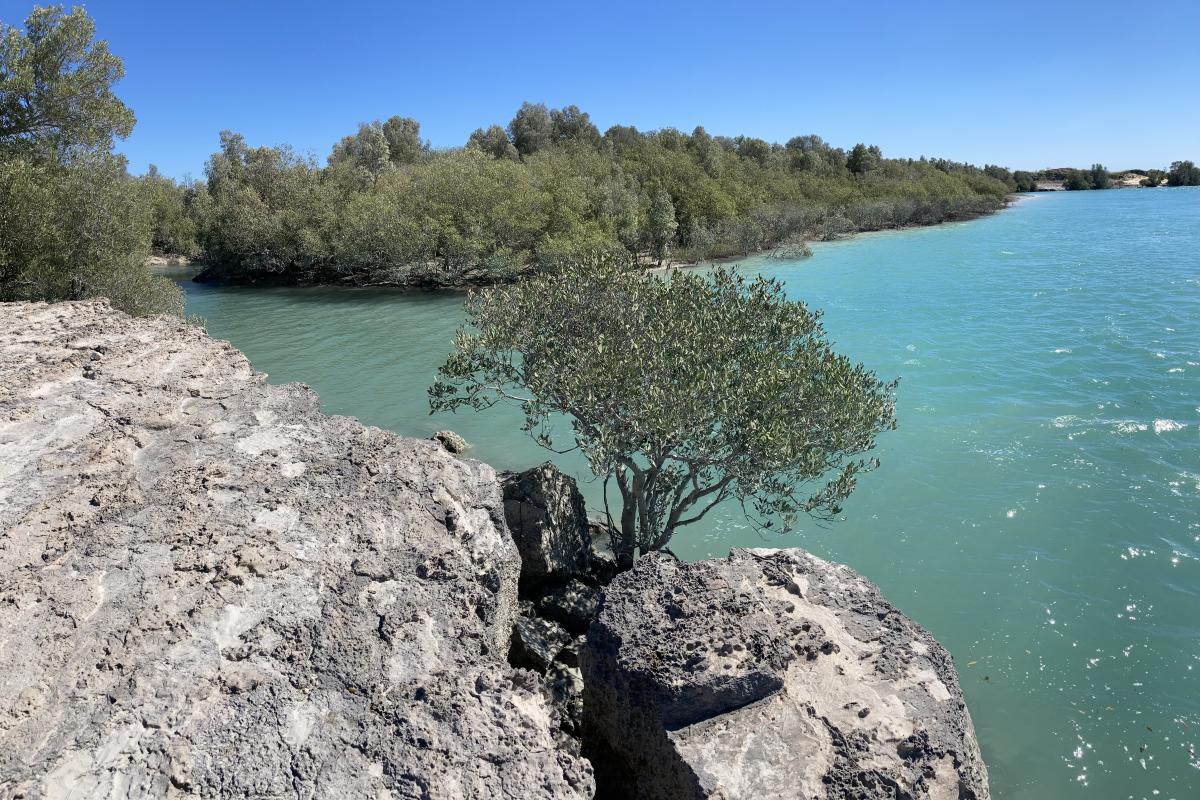About this park
The park is jointly managed with the Yawuru Traditional Owners and the Shire of Broome. It is an intertidal area north of Cable Beach and Willie Creek and includes Coconut Wells Lagoon.
Some must-see places to visit include Wirrjinmirr (Willie Creek) and Ngunungurrugun (Coconut Wells) - which, with its turquoise tidal lagoon and rock pools. Cable Beach and Willie Creek are known for their huge tides which can reach up to 10m.
The park is popular for fishing, swimming and bushwalking. You are welcome to bring your dog as long they remain controlled and on a leash. You might see people riding horses on the jani (beaches) of the park.
The park is known for flatback turtles nesting on the beaches so if you see one, stay out of sight and do not disturb them.
The mangroves provide an important feeding and breeding habitat for birds and bats and there are a number of bird species that call the mangroves their home. If you're a bird watcher, explore the tidal mudflats and freshwater wetlands which are visited by migratory shorebirds.
Safety information
Plan when to visit. Consider travelling with a personal location beacon (PLB). In the event you need to be rescued it could save your life!
Extreme heat can be experienced when in the Kimberley. Temperatures can exceed 40°C.
- Avoid dehydration by regularly sipping water - 1 litre per person, per hour.
- Wear a hat, long-sleeved, loose clothing and apply sunscreen.
The Kimberley coast experiences some of the biggest tides in the southern hemisphere. The difference between high and low tide can be up to 9–10 metres. When recreating around the water keep in mind the large and strong tidal movements. Please take time to study the tide charts during your visit to make the most of your time. Tropical cyclones are experienced between November and April. Please check weather reports before you travel.
When you are entering the Kimberley or Pilbara regions, you are entering crocodile country. Two species of crocodile occur in Western Australia: the estuarine (or saltwater) crocodile and the freshwater crocodile. The estuarine crocodile is the largest living reptile and is considered to be a dangerous predator. Freshwater crocodiles are smaller and not as aggressive.
- Download the Crocodiles information guide.
- Pay attention to all warning signs, however just because a sign isn’t there doesn’t mean crocodiles aren’t present.
- If you are unsure don't swim, canoe or use small boats in estuaries, tidal rivers or pools and contact the nearest Parks and Wildlife office.
- If you see a crocodile showing signs of aggressive behaviour, OR is in a Broome Crocodile Control Zone, please contact Parks and Wildlife Service Broome office on (08) 9195 5500.
Dingoes live in the Kimberley and can be found around Broome. They may scavenge food and can be aggressive. Do not feed or try to interact with dingoes, supervise children at all times and keep your pets on a leash. Read more in the Be Dingo Aware fact sheet.
Irukandji and box jellyfish are more commonly reported in Broome and the Dampier Peninsula waters from November to June, but cases have been reported for all months of the year. It is best to stay out of the water during wet season.
Gallery

Activities
 Bird watching
Bird watching
 Fishing
Fishing
 Nature photography
Nature photography
 Picnicking
Picnicking
Plants, wildlife and fungi
Visit the Atlas of Living Australia for a list of species recorded in Yawuru Guniyan Binba Conservation Park.
Traditional Owners
We recognise and acknowledge Yawuru people as the Traditional Owners of Yawuru Guniyan Binba Conservation Park.